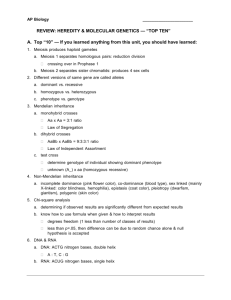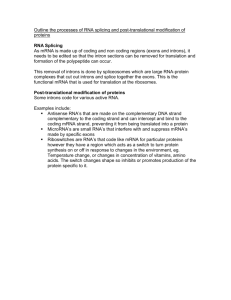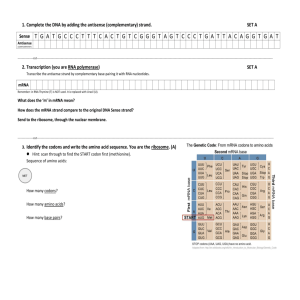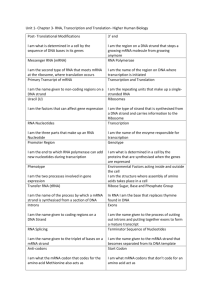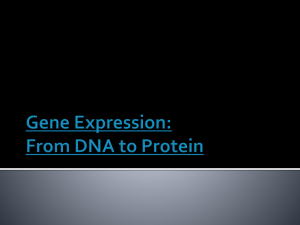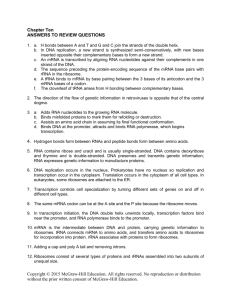Central Dogma: DNA to Protein
advertisement
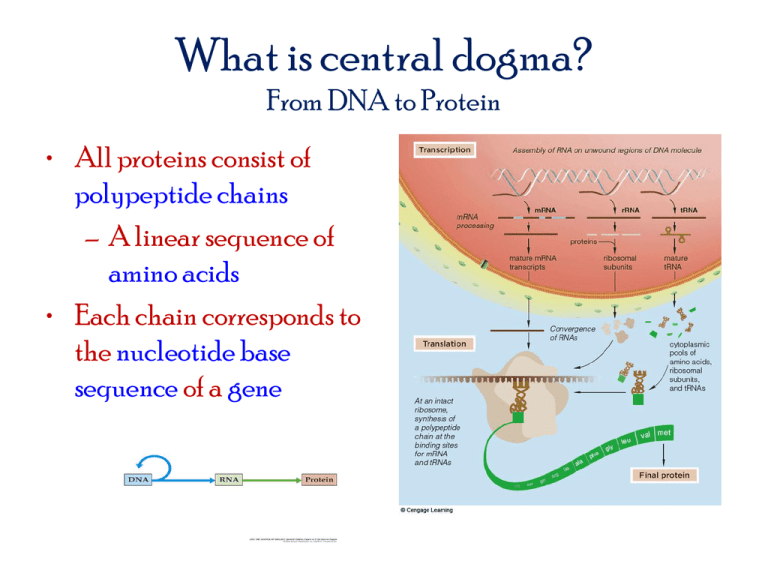
What is central dogma? From DNA to Protein • All proteins consist of polypeptide chains – A linear sequence of amino acids • Each chain corresponds to the nucleotide base sequence of a gene What is the first step? 1. Transcription: Enzymes uses base sequence of a gene as template to make strand of RNA • Two DNA strands unwind in a specific region • RNA polymerase assembles strand of RNA – Covalently bonds RNA nucleotides (adenine, guanine, cytosine, uracil) according to nucleotide sequence of exposed gene What is the second step? • 2. Translation – Information in the RNA strand is decoded (translated) into a sequence of amino acids Prokaryotes and eukaryotes • In prokaryotic cells (no nucleus) – Transcription and translation occur in cytoplasm • In eukaryotic cells – Genes are transcribed in the nucleus – Resulting mRNA is translated in the cytoplasm Three types of RNA • Messenger RNA (mRNA) – Carries protein-building codes from DNA to ribosomes • Ribosomal RNA (rRNA) – Forms ribosomes (where polypeptide chains are assembled) • Transfer RNA (tRNA) – Delivers amino acids to ribosomes RNA and DNA compared • DNA – exists as double-stranded molecules – hereditary information – double helix – contains deoxoyribose sugar • RNA – Disposable copies of hereditary information and some are catalytic – exists as a single stand. – contains ribose instead of deoxyribose – contains uracil in place of thymine RNA Modification: Alternative Splicing • Before mRNA leaves the nucleus: – Introns are removed – Some exons are removed along with introns; remaining exons are spliced together in different combinations – Poly-A tail is added to 3’ end of new mRNA What is the genetic code? • Messenger RNA (mRNA) carries DNA’s proteinbuilding information to ribosomes for translation • mRNA’s genetic message is written in codons – Sets of three nucleotides along mRNA strand Codons • Codons specify different amino acids – A few codon signals stop translation • Sixty-four codons constitute a highly conserved genetic code

